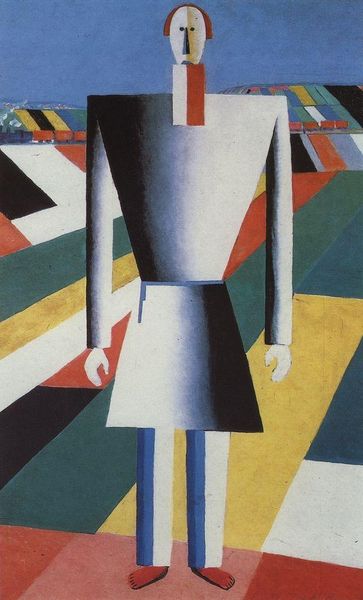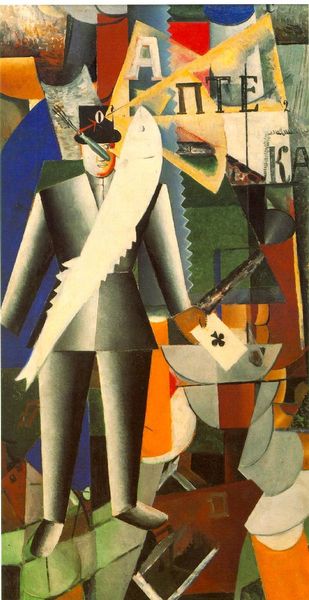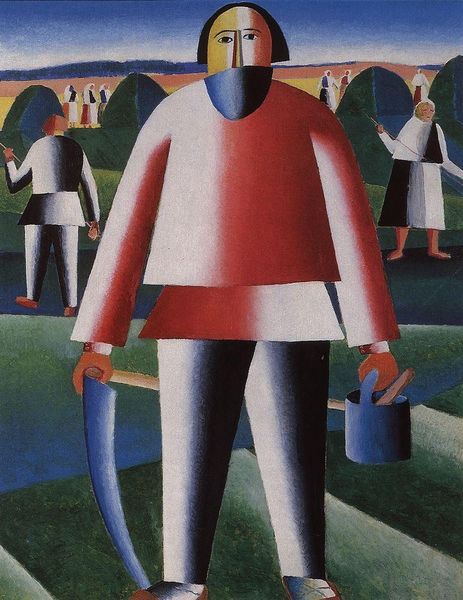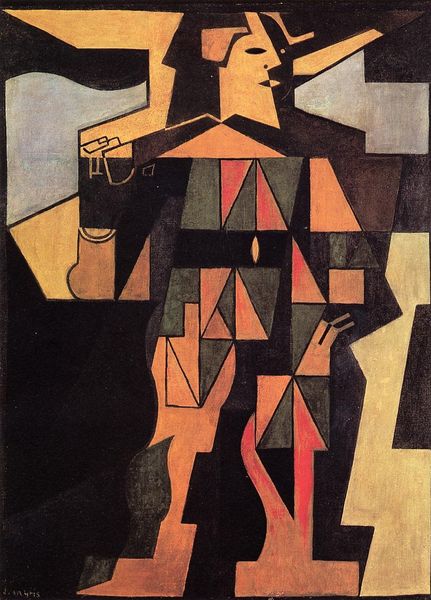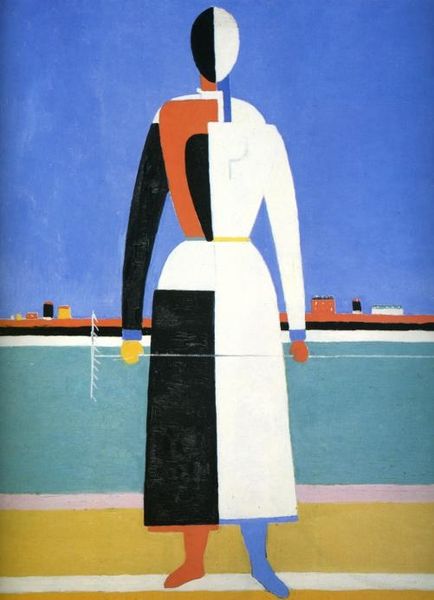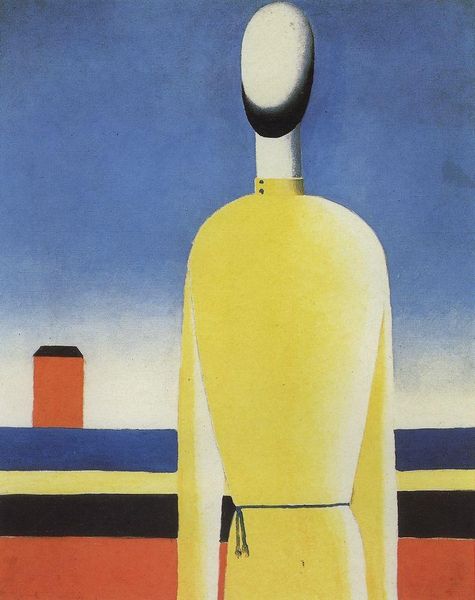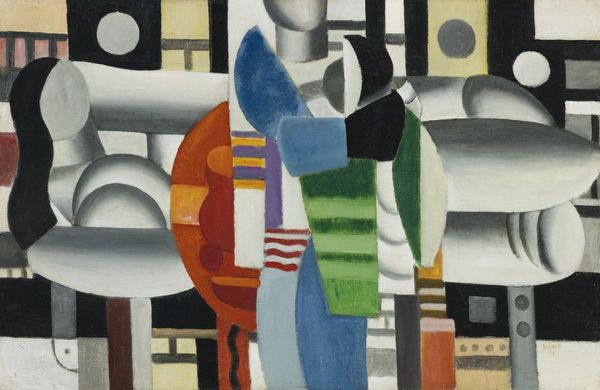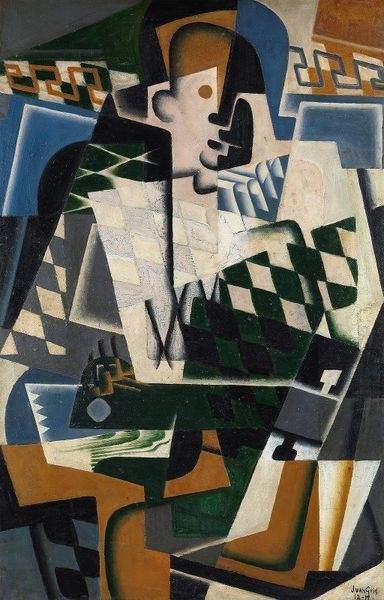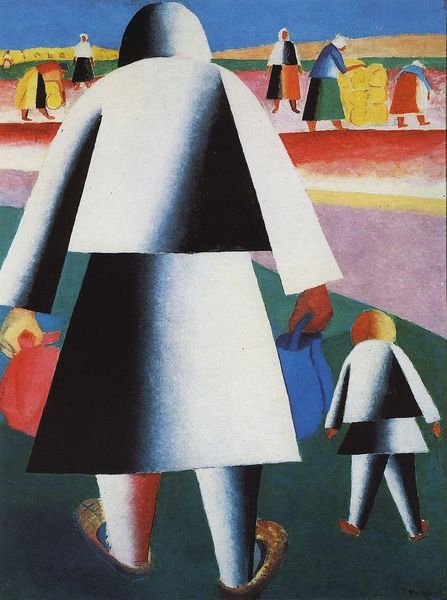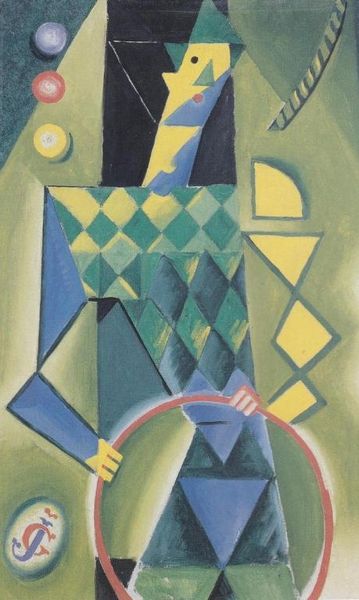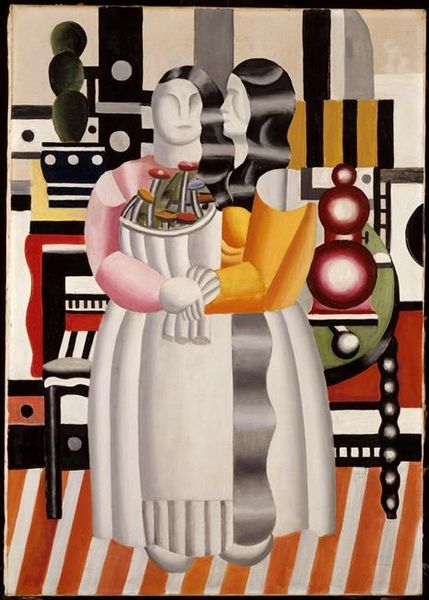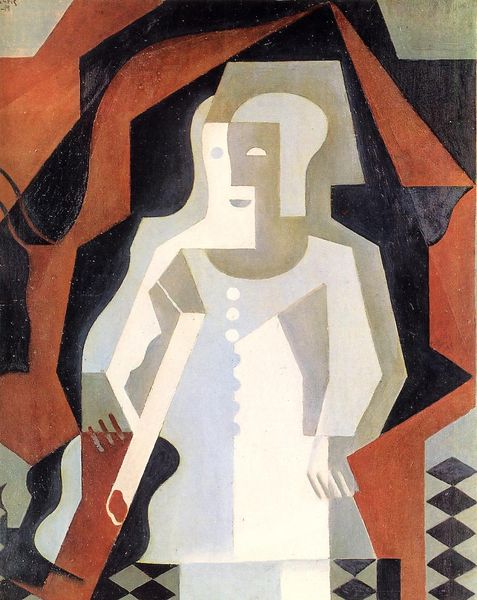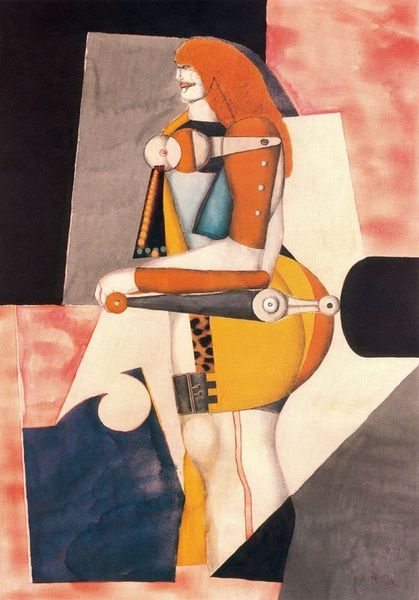
Dimensions: 71 x 44 cm
Copyright: Public domain
Curator: Here we see Kazimir Malevich's painting, Carpenter, executed in 1929 using oil paint. What are your first thoughts on this striking figuration? Editor: The geometry hits me first; the figure’s constructed of simplified forms, and feels almost like a monumental figure, but it's not necessarily inviting. Curator: Indeed. Looking at this painting, I consider the historical context; it was produced during a pivotal shift in Soviet artistic policy. Malevich transitioned from pure abstraction to a renewed, though still stylized, form of representation to align with socialist realism, despite his prior groundbreaking abstract work. Editor: I see that shift clearly, considering Malevich’s focus on suprematism, what's consistent for me is his focus on underlying forms to convey cultural meaning. Notice the carpenter's red face, hands, and blue skirt: Do they echo specific Russian colors and symbolise more than mere appearance, hinting instead at a deep rooted connection to Russian identity or peasantry? Curator: Absolutely, the colours are deliberate and symbolic. But also, the representation of the worker aligns with the communist ideals of the era; that said, the painting also operates as a complex negotiation between artistic integrity and political expectations, where identity and labor intersect within the larger narrative of early Soviet history. Editor: You know, the more I look, the more I see a resonance with Byzantine art. The figure’s frontality and the way he reduces everything to pure colors. And in that face, I see echoes of early Orthodox icons that still resonate in Russian society. Is this just a representation, or could Malevich be exploring something more about what Russians value in their heritage? Curator: It’s very likely, and this fusion creates a particularly poignant commentary on the demands placed upon artists during that era to celebrate labour and align with a specific political narrative while nodding to the deeper symbolics of the worker archetype. Editor: So, while we started by recognizing geometry and shapes, ultimately, both our approaches revealed this picture reflects the intersection of personal identity, heritage, and broader socio-political needs, captured within its simplified lines and colors. Curator: A testament to art's capacity to function on multiple planes, and to provide commentary that echoes across time and cultures.
Comments
No comments
Be the first to comment and join the conversation on the ultimate creative platform.
